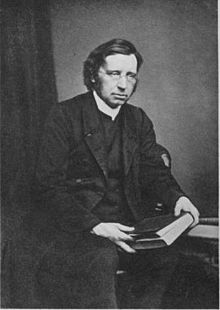This article needs additional citations for verification. (December 2021) |

The Cambridge Camden Society, known from 1845 (when it moved to London) as the Ecclesiological Society,[1] was a learned society founded in 1839 to promote "the study of Gothic Architecture, and of Ecclesiastical Antiques". Its activities came to include publishing a monthly journal, The Ecclesiologist, advising church builders on their blueprints, and advocating a return to a medieval style of church architecture in England, known as Gothic Revival Architecture. At its peak influence in the 1840s, the society had over 700 members, including bishops of the Church of England, deans at Cambridge University, and Members of Parliament. The society and its publications enjoyed wide influence over the design of English churches throughout the 19th century, and are often known as the ecclesiological movement.
During its 20-year lifespan, the Cambridge Camden Society and its journal influenced virtually every aspect of the Anglican Church and almost single-handedly reinvented the architectural design of the parish church. The group was responsible for launching some of the first earnest investigations of medieval church design and through its publications invented and shaped the "science" of ecclesiology, the theological study of the Christian church. Throughout its lifetime, all of the Society's actions had one goal: to return the Church as a whole, and the individual church buildings of England, to the religious splendour of the Middle Ages. As well as aesthetic arguments, a number of theological arguments for the unique appropriateness of the Gothic to church buildings were promoted. The Cambridge Camden Society held tremendous influence in the architectural and ecclesiastical worlds because of the success of this argument: that the corruption and ugliness of the 19th century could be escaped by the earnest attempt to recapture the piety and beauty of the Middle Ages.
The society was founded by undergraduate students at Cambridge University and took its original name from that place and from the 16th-century antiquary and historian William Camden. It was re-established as the St Paul's Ecclesiological Society in 1879.[1] It became the Ecclesiological Society in 1937.
- ^ a b History of the Society Archived 2011-07-26 at the Wayback Machine, Ecclesiological Society.